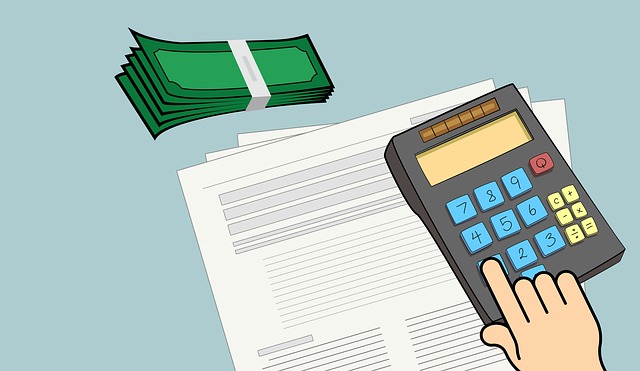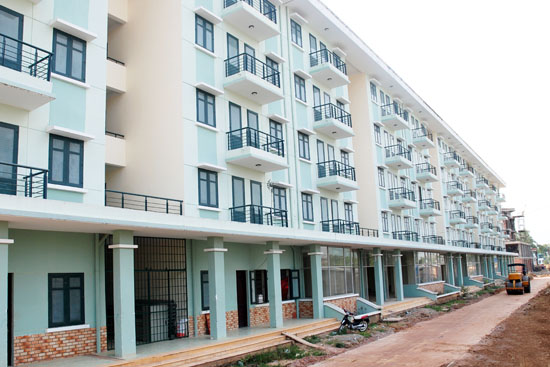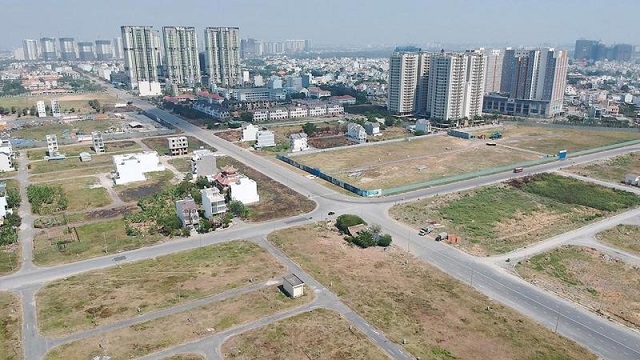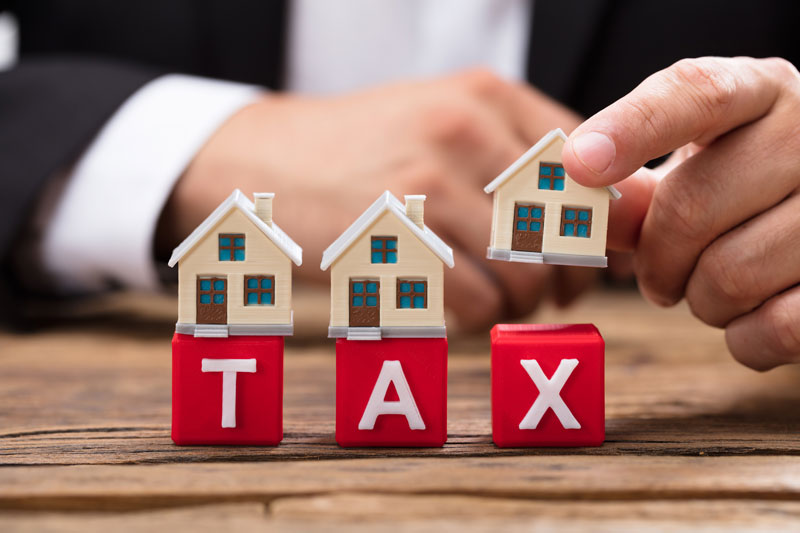What are the current regulations on the objects liable to non-agricultural land use tax in Vietnam? - Bao Binh (Soc Trang, Vietnam)

Summary of objects liable to non-agricultural land use tax in Vietnam (Internet image)
What are the current regulations on the objects liable to non-agricultural land use tax in Vietnam? - Bao Binh (Soc Trang)
1. Objects liable to non-agricultural land use tax in Vietnam
Pursuant to Article 2 of Decree 53/2011/ND-CP stipulates objects liable to non-agricultural land use tax as follows:
Objects liable to non-agricultural land use tax are defined in Article 2 of the Law on Non-Agricultural Land Use Tax, specifically as follows:
- Residential land in rural and urban areas.
- Non-agricultural production and business land specified in Clause 2. Article 2 of the Law on Non-Agricultural Land Use Tax. including:
+ Land for construction of industrial parks, including industrial clusters, industrial parks. export-processing zones and other production and business /ones, to which a common land use regime is applied:
+ Land for construction of production and business establishments, including industrial production, collage industry and handicraft businesses, service and trade establishments and other facilities in support of production and business operations (including also land for construction of production and business establishments in hi-tech parks and economic zones):
+ Land for mineral mining and land used as mineral processing sites, except cases in which mineral mining activities do not affect the top soil layer or the land surface;
+ Land for production of construction materials or pottery, including land used as raw materials and land used as construction material processing and production sites or sites for making pottery.
- Non-agricultural land defined in Article 3 of Decree 53/2011/ND-CP which is used by organizations, households or individuals for commercial purposes.
2. Objects not liable to non-agricultural land use tax in Vietnam
In Article 3 of Decree 53/2011/ND-CP, non-agricultural land used for noncommercial purposes specified in Article 3 of the Law on Non-Agricultural Land Use Tax are not liable lo tax, specifically:
- Land used for public purposes, including:
+ Traffic and irrigation land, including land for construction of roads, bridges, sluices. pavements, railways, airport and airfield infrastructure, including:
Also land planned for construction of airports or airfields under phased investment projects which have been approved but not yet implemented, land for construction of water supply systems (excluding water plants), water drainage systems, irrigation work systems, dikes and dams, and land within traffic and irrigation safety corridors;
+ Land for construction of public cultural. healthcare, education and training, physical training and sport facilities, including crèches, schools, hospitals, marketplaces, parks, flower gardens, children's recreation centers, squares, cultural works, post-cultural spots of communes, wards and townships, monuments, commemorative stelae, museums, functional rehabilitation institutions for persons with disabilities, vocational training schools, drug detoxification institutions, reformatories. dignity restoration camps and nursing homes for elderly persons and disadvantaged children;
+ Land with historical and cultural relics or scenic places which have been ranked or placed under protection under decisions of People's Committees of provinces and centrally run cities (below referred to as provincial-level People's Committees);
+ Land for construction of other public works, including land used for public-utility purposes in urban centers and rural residential areas;
Land for construction of common-utility infrastructure facilities in industrial parks, hi-tech parks and economic zones under approved plans;
Land for construction of power transmission lines, communication networks, petrol, oil and gas pipelines and their safety corridors;
Land of power stations, irrigation reservoirs and dams;
Land of funeral halls and crematories; land of landfills, garbage dumping grounds and waste treatment complexes approved by competent state agencies.
- Land used by religious institutions, including land of pagodas, churches, oratories, chancels, monasteries, religious training institutions, offices of religious organizations and other religious establishments permitted by the State.
- Land used as cemeteries and graveyards.
- Land under rivers, canals, ditches, streams and special-use water surface;
- Land with communal houses, temples, hermitages, clans' worship halls, including land areas for building these works and their premises;
- Land for construction of working offices and non-business works, including;
+ Land of working offices of state agencies, political organizations, socio-political Organizations and public non-business organizations; offices of Vietnam-based diplomatic representative missions and foreign consulates and intergovernmental international organizations entitled to privileges and immunities like foreign diplomatic representative missions in Vietnam;
+ Land of economic, cultural, social, scientific and technological and diplomatic non-business establishments of state agencies, political organizations, socio-political organizations and public non-business organizations.
- Land used for defense and security purposes, including:
+ Land of barracks and army camps;
+ Land of military bases:
+ Land of national defense works, battlefields and other special defense and security works;
+ Land of military stations and ports:
+ Land of industrial and science and technology works in direct service of national defense and security:
+ Land of warehouses of the people's armed force units;
+ Land of firing ranges, drill grounds. weapon testing grounds and weapon disposal sites;
+ Land of guest houses, public-duty houses, competition halls, gyms and other facilities within barracks and camps of the people's armed force units;
+ Land of prisons, detention houses, educational institutions and reformatories managed by the Ministry of National Defense or the Ministry of Public Security:
+ Land of other combat works and defense and security works specified by the Government.
- Non-agricultural land for construction of works of cooperatives engaged in agricultural or forestry production, aquaculture and salt-making: land in urban areas which is used for construction of glasshouses and other buildings for farming purposes, including cases in which crops are not planted directly on land;
Land for construction of farms for raising livestock, poultry and other animals as permitted by law;
Land for construction of research and testing farms and stations in the agriculture, forestry and fishery sectors; land for construction of plant and animal nurseries;
Land for construction of households' and individuals' warehouses for storing farm produce, plant protection drugs, fertilizers and agricultural machines and tools.
3. Non-agricultural land use taxpayers in Vietnam
Pursuant to Article 4 of the Law on Non-agricultural Land Tax 2010 stipulates on taxpayers as follows:
- Taxpayers are organizations, households and individuals that have the right to use tax-liable land specified in Article 2 of the Law on Non-agricultural Land Tax 2010.
- When organizations, households or indivi-duals have not yet been granted land use right certi-ficates or house and land-attached asset ownership certificates (below collectively referred to as certificates), current land users will be taxpayers.
- Taxpayers in some cases are specified as follows:
+ When land is leased by the State for the implementation of investment projects, lessees will be taxpayers;
+ When persons having land use rights lease land under contracts, taxpayers shall be identified as agreed upon in these contracts. When no agreement on taxpayers is made in contracts, persons having land use rights will be taxpayers;
+ When land has been granted a certificate but is currently under dispute, pending the dispute settlement, current land users will be taxpayers. Tax payment does not serve as a ground for the settlement of disputes over land use rights;
+ When many persons have the right to co-use a land plot, the lawful representative of these co-users will be the taxpayer;
+ When a person having land use rights contributes his/her land use rights as business capital, thereby forming a new legal entity that has the right to use tax-liable land specified in Article 2 of the Law on Non-agricultural Land Tax 2010, the new legal entity will be the taxpayer.
Ngoc Nhi
- Key word:
- non-agricultural land use tax in Vietnam
 Article table of contents
Article table of contents







.Medium.png)
.Medium.png)
.Medium.png)
.Medium.png)
